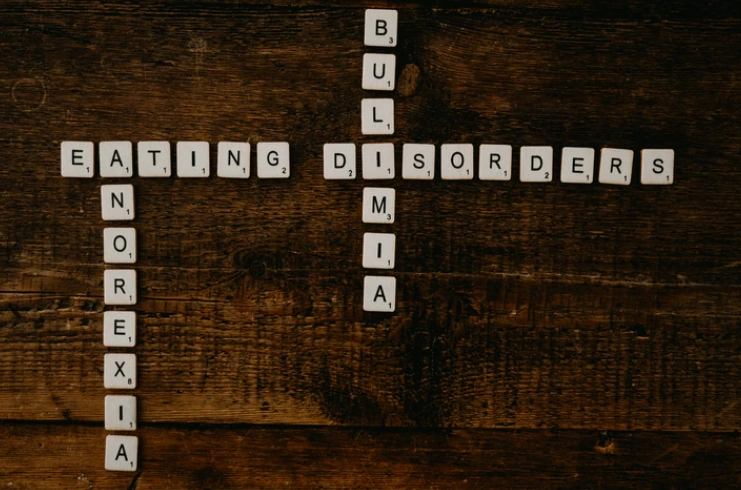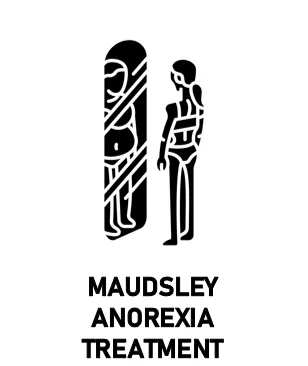Maudsley Anorexia Treatment – also known (and henceforth referred to) as MANTRA – is a relatively new treatment type, developed by senior clinicians at the Maudsley Hospital in London.
This model of treatment attempts to change the factors that contribute to the condition in the individual. Harmful personality traits can be addressed, with certain goals made for the future.
Various behavioural experiments can be made, which can result in changes in eating behaviours. So far, this form of treatment has proved very helpful for many.

The Science Behind Maudsley Anorexia Treatment
MANTRA was developed by senior clinicians at Maudsley Hospital in London – it is designed to treat the eating disorder anorexia nervosa.
It can be completed as either an individual or as a family, depending on the circumstances involved.
There are 3 phases of MANTRA, spread over 12 months. These phases are weight restoration, then returning control of eating to the individual, and finally establishing a healthy diet and identity for the patient to follow.
MANTRA usually involves the family of the patient participating in treatment. The idea is that this process, along with support from the family of a patient, can lead to successful treatment of anorexia nervosa.
How Does Maudsley Anorexia Treatment Work?
As mentioned, MANTRA takes place over 12 months. To begin with, sessions are usually weekly – normally for 10 weeks. Another 8-12 appointments will follow, normally on a semi regular pattern, such as every 3 weeks.
The first aim of the treatment is to help the patient return to a weight and height that is close to the normal levels expected of someone at that age.
At this point, a therapist will focus on the potential dangers of anorexia nervosa, and attempt to help parents in appropriately feeding the patient. Or if a patient is living alone, they will look at ways to start eating again.
A therapist may observe a family meal to understand the family further. The therapist will try and help wherever possible with encouraging the patient to eat. It is crucial that the parents of an individual are not critical in any manner. Gradually, weight gain should take place.
The next stage attempts to help the patient control their own eating. Techniques are used to try and treat this. In the case of family treatment, they continue to play an important role.
Eventually, the final phase involves the therapist and patient (and family if applicable) reviewing their progress, and seeing the differences in the different time periods. The patient should now have a robust diet to follow, hopefully with the aim of avoiding further weight problems.
Clearly, the above is a very, very quick explanation of MANTRA. In reality, these phases will be followed, but they will be undertaken at their own pace. The focus is always on the patient, and looking at ways that they can improve their health.
Between sessions, it will be important for a patient to put into practice what they have learned. Therefore, commitment is crucial.
Most people find MANTRA works, and that their health considerably improves as a result of the treatment. It can also help in the long-term.
When is Maudsley Anorexia Treatment Useful?
Maudsley Anorexia Treatment is designed for the eating disorder Anorexia Nervosa. This treatment has proven effective for Anorexia nervosa.
If a patient with Anorexia nervosa does not have symptoms that require hospitalisation, they will normally qualify for this treatment.
There is also some suggestion that a similar format may work for Bulimia nervosa – another eating disorder. But many therapies exist, with people generally having different preferences, depending on their circumstances.
How effective is Maudsley Anorexia Treatment?
MANTRA was specifically designed based on pre-existing evidence. So, as may be expected, it looks to be very effective at treating Anorexia nervosa.
Significant research carried out over the years all suggest that MANTRA is an effective tool for treating Anorexia nervosa [1]. It seems to be particularly effective when family members partake [2]. For those living alone or with friends, it may not be as effective.
It is also possible to treat Bulimia nervosa with MANTRA, though other treatments are currently seen as more conventional for that condition.
But while many people will find relief from MANTRA, not everyone will, every case is unique.
How to find a therapist?
It is recommended that you contact your GP and inform them of your problems. They will refer you to the relevant mental health team.
If you are aiming to use the private sector, you could ask your GP or someone you know for a recommendation. You can also look online – the British Association for Counselling and Psychotherapy have a therapist directory on their site.
See Also
- Therapy Home
- Everything You Need To Know About Talking Therapy
- FAQ’s About Talking Therapy
- Maudsley Anorexia Treatment: Everything You Need to Know
- The Advantages and Disadvantages of Maudsley Anorexia Treatment
- 8 Things You Should Know About Maudsley Anorexia Treatment
Alternatives
If talking therapy alone hasn’t worked, then your Doctor may suggest adding a medication.
There are many other types of therapy, you can see an exhaustive list of them here.
Disclaimer
This website should be used purely for informational purposes, and does not intend to, nor should it ever, be used as a replacement for professional medical advice.
We strive to keep all of our pages updated, and ensure that our website is full of factual and in-depth information. However, we encourage you to browse this website with care.
As a reminder, this website and all content within it cannot and should not replace the advice of a trained medical professional. You can read our full disclaimer at this link.
Helplines
If you are struggling with your mental health, help is available. With the right support and treatment, you can make a recovery. For information on helplines, or if you are in a state of crisis, please visit our crisis page by clicking on the relevant link for your geographical location (United Kingdom), (United States), (International). You can also see how to get mental health treatment and the process involved by clicking this link.
References
[1] Lock, J. (2011). Evaluation of family treatment models for eating disorders. Current Opinion in Psychiatry. 24 (4), p274-279.
[2] Le Grange, D. (2005). The Maudsley family-based treatment for adolescent anorexia nervosa. World Psychiatry. 4 (3), p142-146.





























